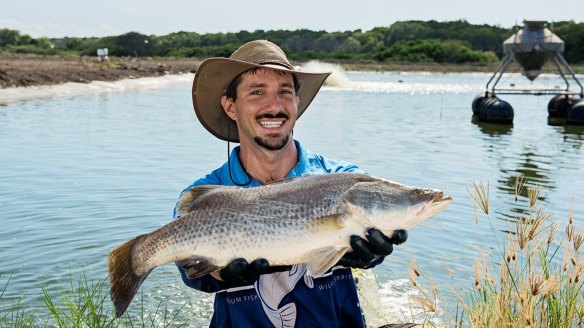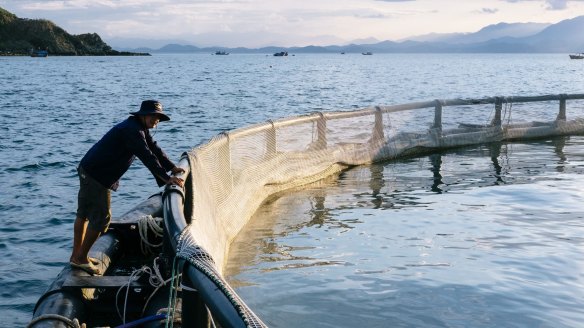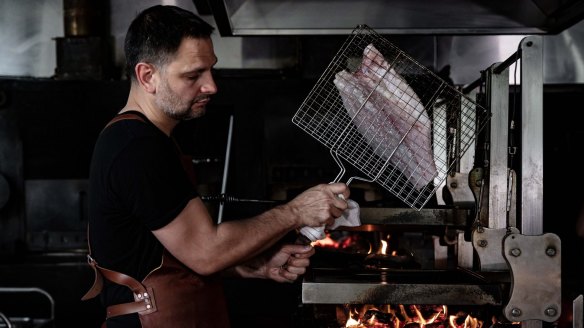Australian fish farmers seek exclusive use of the name 'barramundi'

Few supermarket products sound more Australian than John West's barramundi fillets, enhanced with "delicious Murray River salt, Tasmanian mountain pepper leaf and organic lemon myrtle seasoning", according to the packet description.
However, many consumers would be surprised to find the pearly pink fillets are imported from south-east Asia, says president of the Australian Barramundi Farmers Association (ABFA) Ken Chapman.
"It's totally and utterly misleading Australians. The country of origin is labelled in fine print, but just by using the name 'barramundi', most people assume they're buying Australian fish. Today, around 60 per cent of 'barramundi' consumed in Australia is actually imported – it should be called Asian seabass."

Barramundi and Asian seabass are different names for the same fish species (Lates calcarifer) native to Australian and Indo-Pacific waters. Chapman is calling for "barramundi" to be used only when referring to Australian Lates calcarifer.
"It's an iconic Indigenous name, and when most people see barramundi in shops or on menus, they assume it's an Australian fish," he says. "We want to clear up any confusion regarding where it's from."
The ABFA is campaigning for the Australian Fish Names Standard to identify imported Lates calcarifer as Asian seabass, reserving "barramundi" for fish caught or farmed in Australia. Funded by the Fisheries Research and Development Corporation, adherence to the standard is strongly encouraged but not currently mandatory.

Additionally, the ABFA is creating a case for the federal government to protect the name "barramundi" by law through registration of geographical indication (GI) – similar to Parma ham, Stilton cheese and Champagne, which can only be produced in designated European regions.
Australia currently protects GIs through certification trade marks and a bespoke system for wine under the Wine Australia Act 2013. Registering "barramundi" as a protected name will be a challenge for the farmers' association.
"It would not be possible to register the word 'barramundi' on its own for Australian farmed or caught barramundi because barramundi is the name of a type of fish," said a spokesperson for IP Australia, which administers the nation's intellectual property rights system.
"However, it may be possible for the word "barramundi" to be incorporated into a composite mark, with other text or images, which as a whole emphasises Australian origin."
"Barramundi" is currently used by American company Australis Aquaculture to label its Clean Harvest-branded fillets for sale in Australia and around the world.
The barramundi is farmed in ocean waters off Van Phong Bay, Vietnam, and certified sustainable by third-party organisation BAP (Best Aquaculture Practices). Australis chief executive Josh Goldman doesn't plan to stop using "barramundi" anytime soon.
"Barramundi is the only legally recognised name for the species in every English-speaking country," he says.
"While Australians can take pride in having named the fish, the idea of renaming it based on the location of catch or harvest makes little sense in our global world. You don't hear Germans claiming plagiarism for 'lager' or Italians for 'pizza'."
Goldman says just because a barramundi comes from Australia, that doesn't guarantee quality or sustainability either. "But, competition makes everyone better and the consumer wins. At least, that's how it's supposed to work."
Australian consumers seeking assurance their barramundi is from a responsible source should look for the gold tick logo of Australia's Sustainably Farmed Barramundi Certification Program, says Chapman.
"Some people might be happy to eat Asian seabass, sure. But, I bet most would rather eat Australian barramundi and support Australian farmers."
Barramundi 101
Australia's farmed barramundi industry began in the 1980s with small levels of production. Today, the industry produces about 9000 tonnes of whole fish annually. Wild barramundi catch was estimated to be 500 tonnes last year and declining, reportedly due to the high cost of fishing compared to farming and imports.
Queensland and the Northern Territory are important barramundi farming areas, however the fatty fish is now harvested all over mainland Australia. "People are surprised to hear we grow barramundi just outside Melbourne," says Boris Musa, head of MainStream Aquaculture in Werribee. "Barramundi thrive off warm temperatures and our farm uses geothermally heated spring water, untouched by industrial or biological pollutants."
Chef Lennox Hastie of Sydney's Firedoor restaurant says people who avoid barramundi because they have encountered a "muddy" tasting fish in the past should give it another crack. "Australian aquaculture gets better every year in terms of quality control systems and how farmers manage water to keep it as clean as possible."
Hastie grills Humpty Doo barramundi at Firedoor and might serve it with charred baby gem lettuce, black olives and fresh radishes. "The good thing about barramundi is that it can take something quite punchy," he says. "It's super fatty, so just pair it with any of the beautiful citrus we have in Australia if you want to go simple. It can also hold its own against XO sauce or anchovy dressing,"
While barramundi is a versatile fish that lends itself to curries and poaching, Hastie says skin-on grilling is his preferred method of cooking. "Even if you don't want to eat the skin, it helps protect the fish while it's grilling. It also hides a beautiful layer of fat which moistens the flesh and develops flavour."
Restaurant reviews, news and the hottest openings served to your inbox.
Sign up- More:
- Restaurant news
